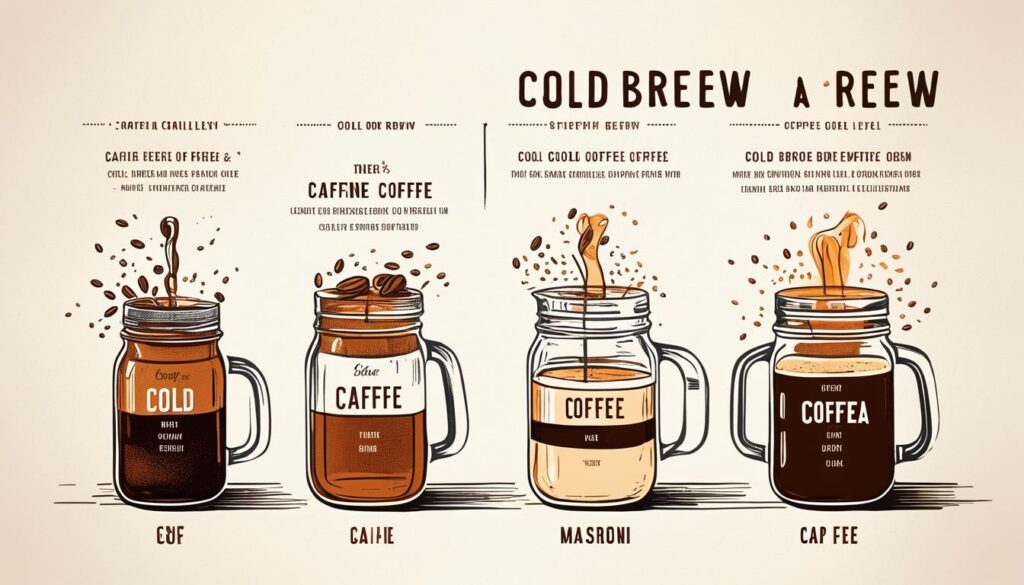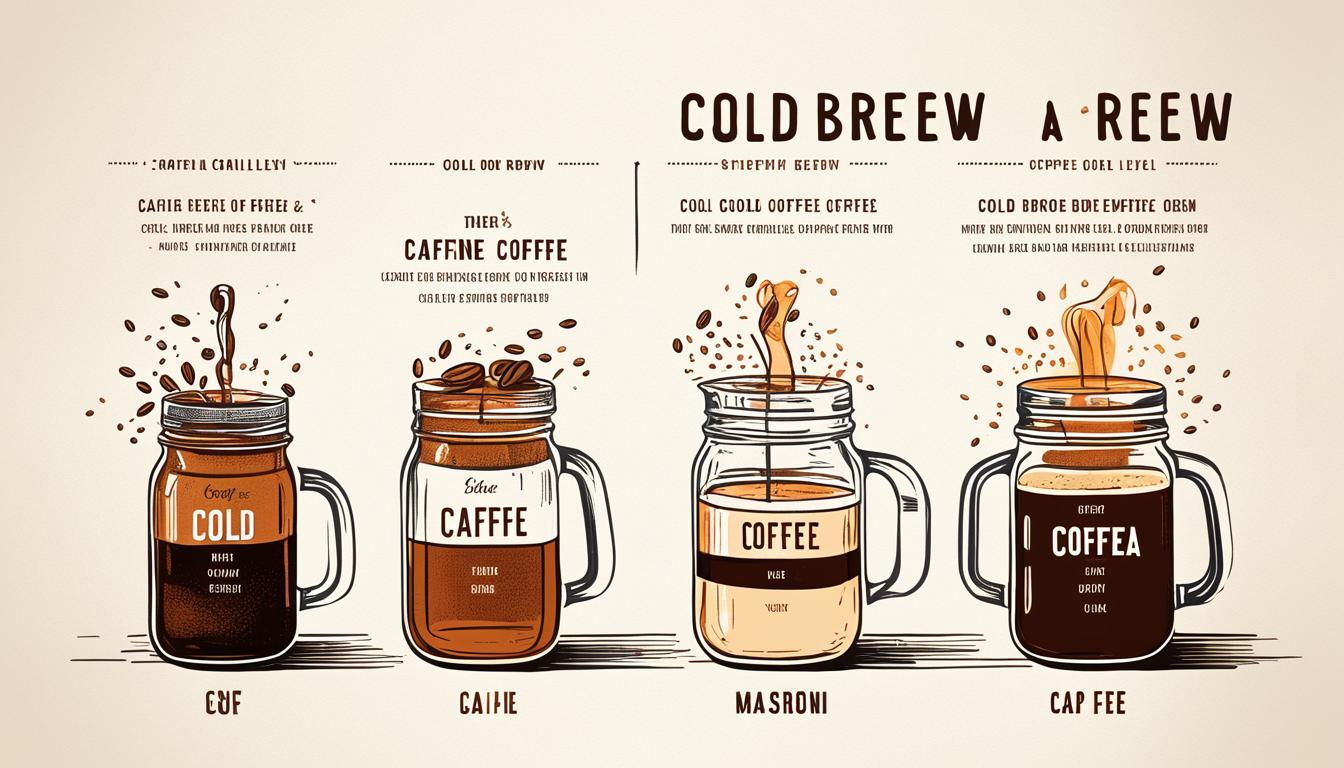
Cold Brew Coffee Caffeine Content: Unpacking the Buzz and the Brew
The world of coffee is vast and varied, with brewing methods evolving alongside consumer preferences. One of the most popular recent additions is cold brew coffee, a smooth, often less acidic alternative to traditional hot-brewed coffee. But beyond its appealing taste and refreshing qualities, a key question often arises: what about the cold brew coffee caffeine content? This article delves into the caffeine levels of cold brew, comparing it to other coffee preparations, and exploring the factors that influence the final buzz you experience.
Cold brew coffee caffeine content is a subject of ongoing debate and investigation. While the general perception is that cold brew packs a serious punch, the reality is more nuanced. Several variables contribute to the final caffeine concentration, making it difficult to provide a definitive answer that applies universally. Understanding these variables is crucial for consumers looking to manage their caffeine intake and make informed choices.
Brewing Basics: How Cold Brew Differs
To understand the cold brew coffee caffeine content, it’s essential to grasp how it’s made. Unlike hot-brewed coffee, which uses hot water to extract compounds from coffee grounds, cold brew is steeped in cold or room-temperature water for an extended period, typically 12 to 24 hours. This slow extraction process is what gives cold brew its characteristic smoothness and lower acidity. The grounds are then filtered out, leaving behind a concentrated coffee liquid.
This slow steeping method is a critical factor in determining the final cold brew coffee caffeine content. Because the water temperature is much lower, the extraction process is different than with hot water. This can influence the types and amounts of compounds extracted from the coffee grounds, including caffeine.
Factors Influencing Caffeine Levels
Several factors play a significant role in determining the cold brew coffee caffeine content. These include:
- Coffee Bean Type: The type of coffee bean used significantly impacts caffeine levels. Robusta beans, known for their higher caffeine content, will result in a more potent brew compared to Arabica beans. The roast level also contributes, with darker roasts typically having slightly less caffeine than lighter roasts due to caffeine degradation during the roasting process.
- Coffee-to-Water Ratio: The ratio of coffee grounds to water is a crucial variable. A higher concentration of coffee grounds relative to water will naturally yield a higher cold brew coffee caffeine content. This is why cold brew is often sold as a concentrate, meant to be diluted with water or milk before consumption.
- Steeping Time: The longer the coffee grounds steep, the more caffeine is extracted. However, there’s a point of diminishing returns. While longer steeping times can increase caffeine levels, they can also extract undesirable flavors that negatively impact the taste.
- Grind Size: The grind size of the coffee grounds also plays a role. Finer grounds offer a greater surface area for extraction, potentially leading to a higher caffeine yield compared to coarser grounds.
Understanding these factors allows for a more informed approach to managing your caffeine intake from cold brew.
Cold Brew vs. Other Coffee Brewing Methods: A Caffeine Comparison
Comparing the cold brew coffee caffeine content to other brewing methods provides valuable context. Here’s a general overview, although remember that individual results will vary based on the factors mentioned above:
- Cold Brew: Typically, a standard serving of cold brew (often 8 ounces) can contain anywhere from 150mg to 250mg of caffeine, or even higher depending on the concentration. This is often significantly higher than a standard cup of drip coffee.
- Drip Coffee: A typical 8-ounce cup of drip coffee usually contains around 95mg to 165mg of caffeine.
- Espresso: A single shot of espresso (about 1 ounce) generally contains around 63mg of caffeine. However, drinks like lattes and cappuccinos, which use espresso as a base, can have a higher overall caffeine content.
- Instant Coffee: Instant coffee typically has a lower caffeine content, with an 8-ounce cup containing around 63mg to 80mg.
These are general estimates, and the actual cold brew coffee caffeine content can differ significantly. Always check the specific product information, especially if you are sensitive to caffeine or have health concerns.
The Impact of Caffeine: Effects and Considerations
Caffeine is a stimulant that affects the central nervous system. It can increase alertness, improve focus, and boost energy levels. However, it can also cause side effects, especially in those sensitive to caffeine or who consume excessive amounts.
Common side effects of excessive caffeine intake include:
- Anxiety and nervousness
- Insomnia
- Rapid heartbeat
- Digestive issues
- Headaches
If you’re concerned about the cold brew coffee caffeine content and its impact, consider the following:
- Start with a small serving: Begin with a smaller amount of cold brew to gauge your tolerance.
- Dilute the concentrate: If you’re using a cold brew concentrate, dilute it generously with water or milk.
- Pay attention to the source: Different brands and cafes may have varying caffeine levels. Inquire about the brewing process and caffeine content if you’re unsure.
- Monitor your intake: Keep track of your daily caffeine consumption from all sources, including coffee, tea, soda, and energy drinks.
- Consult with a healthcare professional: If you have any health concerns or are sensitive to caffeine, talk to your doctor.
Decoding the Buzz: Understanding Cold Brew Caffeine Levels
Ultimately, the cold brew coffee caffeine content is not a fixed number. It’s a result of a complex interplay of factors, from the type of bean to the brewing process. While cold brew can indeed deliver a significant caffeine punch, it’s essential to approach it with awareness. By understanding the variables that influence caffeine levels and paying attention to your body’s response, you can enjoy the smooth, refreshing qualities of cold brew coffee responsibly.
The popularity of cold brew continues to rise, and with it, the importance of understanding its caffeine content. From the coffee shop to your home, being informed empowers you to make the best choices for your health and well-being. Always prioritize moderation and be mindful of your body’s signals.
For further information about coffee and caffeine, [See also: The Health Benefits of Coffee Consumption, Decaffeinated Coffee: A Comprehensive Guide, and How to Make Cold Brew at Home].


